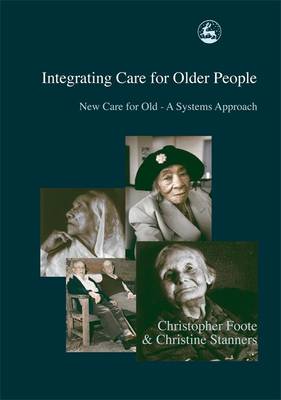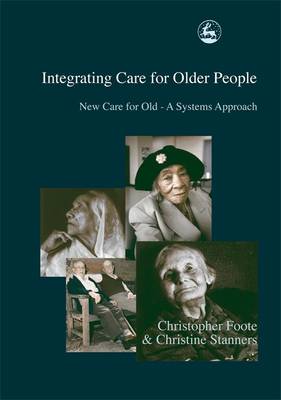
Wil je zeker zijn dat je cadeautjes op tijd onder de kerstboom liggen? Onze winkels ontvangen jou met open armen. Nu met extra openingsuren op zondag!
- Afhalen na 1 uur in een winkel met voorraad
- Gratis thuislevering in België vanaf € 30
- Ruim aanbod met 7 miljoen producten
Wil je zeker zijn dat je cadeautjes op tijd onder de kerstboom liggen? Onze winkels ontvangen jou met open armen. Nu met extra openingsuren op zondag!
- Afhalen na 1 uur in een winkel met voorraad
- Gratis thuislevering in België vanaf € 30
- Ruim aanbod met 7 miljoen producten
Zoeken
Integrating Care for Older People
New Care for Old - A Systems Approach
Christopher Foote, Christine Stanners
Paperback | Engels
€ 50,95
+ 101 punten
Omschrijving
Highly Commended in the Public Health category of the 2003 BMA Medical Book Competition.
'The book is also helpfully laid out. `Signposts' in right hand margins link issues discussed in different parts of the book. Each chapter has a short summary of contents at the start, an overview at the end and `headline points'- short bullet points designed to reinforce key messages in the reader's mind. The end of each chapter also includes references and further suggested reading... This book will repay study by anyone involved in planning or delivering services for older people- particularly those working to try to implement `joined up' services. From this perspective, the book is genuinely inspirational. It shows how much can be achieved by working in this way and -more importantly- how it was done.' - Journal of Interprofessional Care 'This is an important book... It needs to be read and understood by everyone involved in caring, but especially by those with the power to influence change- which is increasingly purchasers and senior managers. It also provides a valuable guide to a large literature and has useful examples of questionnaires, data collection forms and clinical vignettes.' - International Journal of Geriatric Psychiatry 'This book is unique and brilliant at the same time. It shows the limits of what any given healthcare professional can accomplish and the amazing, seemingly impossible feats that an effective team caring for older persons can accomplish. The commentary on leadership in healthcare and the ways in which healthcare teams evolve and work is excellent. It is not in the least dry, but rather invigorating as one sees the concepts, values, and visions manifest in clever solutions to problems... It weaves in the history of geriatrics seamlessly. The enthusiastic anticipation in the excellent foreword is amply justified. The concepts here are universal... Every medical library should possess this remarkable book.' - Doody's Reviews The authors of this book share their practical experience of implementing a multi-agency approach to the support of older people. They show how systems thinking can help with the complexity of developing a model of care that co-ordinates medical, social and community services. They offer insight into the effective use of on-going assessment, evaluation, costing and information technology, with examples. They demonstrate how they achieved a `one-stop' rapid response to emergencies and a multi-level approach to risk management. They also show how enabling the older person to become an equal partner in decision-making, both as an individual user and as a citizen, reduces dependency, and can prevent current problems such as overlap and duplication of service and inappropriate admission to hospital and residential care. They offer models of consultation and guidance on running participative groups. This resource meets the growing need for material on multi-agency practice and is an invaluable tool for all those working across organisational and professional boundaries to deliver an integrated care system for older people.Specificaties
Betrokkenen
- Auteur(s):
- Uitgeverij:
Inhoud
- Aantal bladzijden:
- 384
- Taal:
- Engels
Eigenschappen
- Productcode (EAN):
- 9781843100102
- Verschijningsdatum:
- 23/05/2002
- Uitvoering:
- Paperback
- Formaat:
- Trade paperback (VS)
- Afmetingen:
- 187 mm x 229 mm
- Gewicht:
- 666 g

Alleen bij Standaard Boekhandel
+ 101 punten op je klantenkaart van Standaard Boekhandel
Beoordelingen
We publiceren alleen reviews die voldoen aan de voorwaarden voor reviews. Bekijk onze voorwaarden voor reviews.











